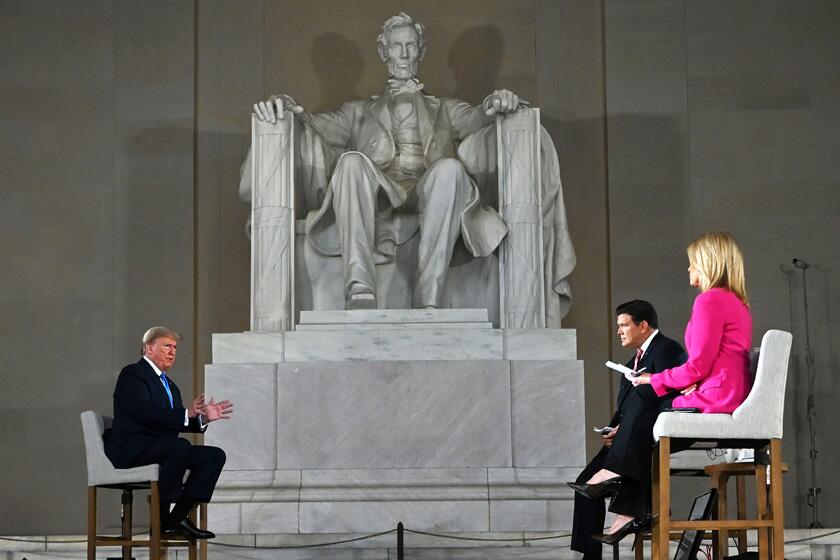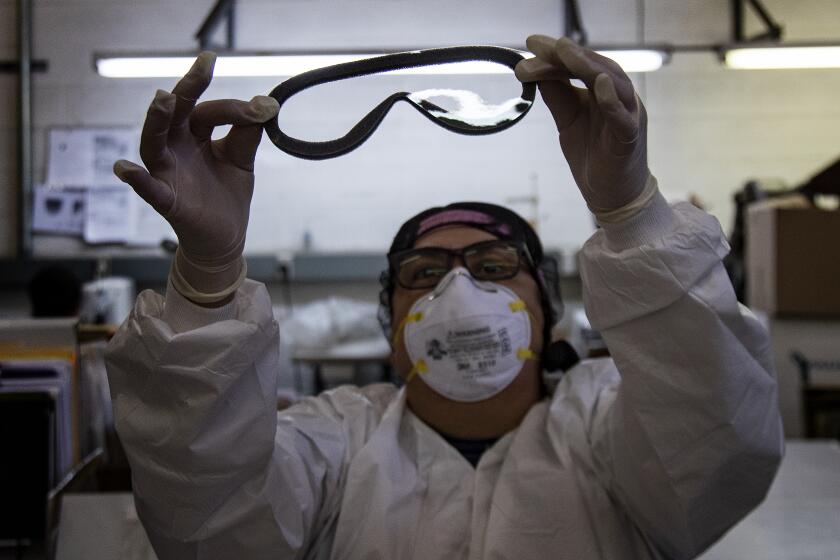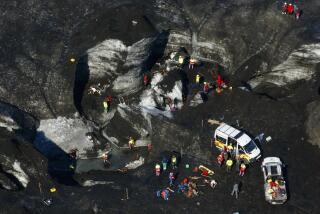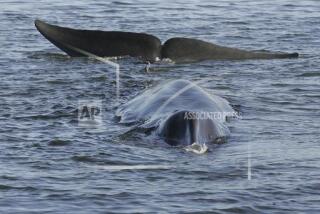With testing, Iceland claims major success against coronavirus
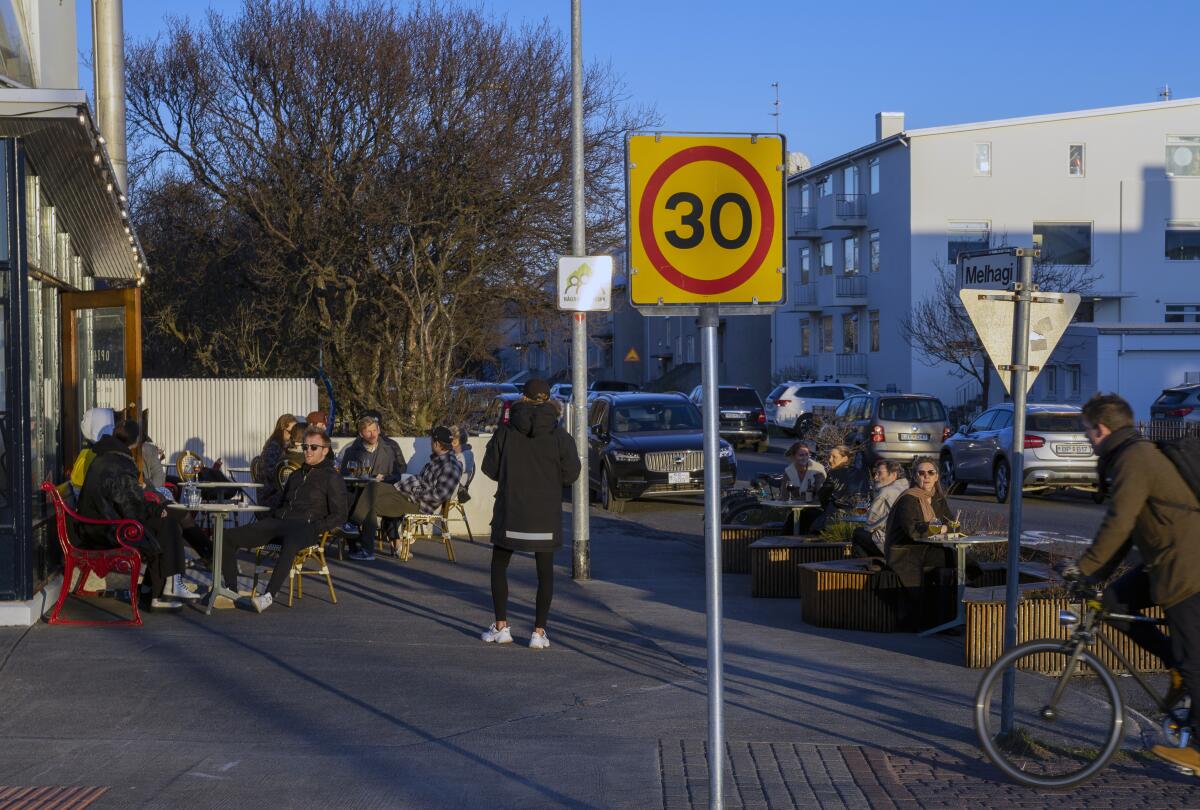
- Share via
HVAMMSTANGI, Iceland — Winter storms isolated the northern village of Hvammstangi from the rest of Iceland. Then spring brought the coronavirus, isolating villagers from each other. Now, as summer approaches, residents hope life is getting back to some kind of normal.
High schools, hair salons, dentists and other businesses across Iceland are reopening Monday after six weeks of lockdown, now that this North Atlantic nation managed to tame its coronavirus outbreak.
Iceland has confirmed 1,799 cases of the virus and 10 people have died. The number of new coronavirus cases each day has fallen from 106 at the peak of the outbreak to single digits — even, on some days, zero.
“I didn’t expect the recovery to be this fast,” said Iceland’s chief epidemiologist, Thorolfur Gudnason.
Iceland’s success is partly testament to its tiny population — just 360,000 people. But it also reflects decisive action by authorities, who used a rigorous policy of testing and tracking to find and isolate infected people, even when they had no symptoms.
That has helped Iceland weather the pandemic without resorting to the near-total social and economic shutdowns enforced in many other European countries. Infected people and their contacts were quarantined, but the rest of the population was not forced to stay inside, only to be careful.
Iceland, with aggressive testing and mapping, small population, diverse geography and film infrastructure, could be a prime destination for filmmakers.
A volcanic island nudging the Arctic Circle, Iceland may be remote, but it is far from isolated. Its Keflavik Airport is a trans-Atlantic hub, and Icelanders are enthusiastic travelers. As in several other European countries, some of the first cases of the virus here were brought back from ski resorts in the Alps, including the Austrian village of Ischgl.
Early vigilance was key to Iceland’s success. The country confirmed its first case of the virus Feb. 28, and declared Ischgl a high-risk zone March 5, two days before authorities there confirmed the first case.
Gudnason said Iceland had been updating and testing its response to a global pandemic since 2004. Hospitals had been testing people arriving from abroad for a month before the first confirmed case, and a media campaign urged hand washing and social distancing.
“Each institution involved in the response knew its role from the start,” he said.
Iceland quarantined everyone returning from virus hot spots and began test-and-trace measures to locate and isolate every case. Bigger countries such as Britain took the same approach, at first. But the U.K. abandoned test-and-trace in March as the number of cases overwhelmed the country’s testing capacity. More than a month later and with almost 30,000 Britons dead, the U.K. is scrambling to resume testing and tracing as part of its route out of national lockdown.
Iceland’s testing capacity was helped by the presence of Reykjavik-based biopharmaceutical company deCODE Genetics, which early in the outbreak teamed up with health authorities to ramp up public testing.
Over six weeks, Iceland managed to test almost 50,000 people, more than 13% of the population, the biggest chunk of any country in the world.
Coronavirus could kill 100,000, Trump says, weeks after predicting lower toll
DeCODE did not test people already feeling sick or in quarantine, who were tested in hospitals. The company used its facilities to test a cross-section of the population, and identified scores of new cases, including people with mild or no symptoms.
Kari Stefansson, deCODE’s ebullient CEO, said the approach showed that “with the use of modern science, even an epidemic like this one can be contained.”
Iceland’s testing yielded new leads for scientists about how the virus behaves. Early results suggested 0.6% of the population were “silent carriers” of the disease with no symptoms or only a mild cough and runny nose.
Preliminary research suggests one-third of those who tested positive at deCODE infected someone around them, providing evidence that silent carriers do transmit the disease but much less than symptomatic patients.
In a random sample of 848 children under the age of 10 none of them tested positive, which guided Icelandic authorities’ decision to keep schools open for children under 16.
Alongside the testing, civil defense authorities set up a Contact Tracing Team, including police officers and university students, which used legwork and phone calls to identify people who had come into contact with infected individuals. A mobile phone tracing app was up and running a few weeks later.
Gudnason said the approach’s success is shown by the fact that about 60% of people who tested positive were already in quarantine after being contacted by the tracing team.
Department of Homeland Security intelligence report said China covered up the extent of the coronavirus outbreak — and how contagious the disease is — to stock up on medical supplies needed to respond to it.
Altogether, 19,000 people were ordered into two-week quarantine. Everyone else carried on with a semblance of normality. Primary schools remained open, and some cafes and restaurants kept operating, following social distancing rules: No more than 20 people gathered at once and everyone 6.5 feet apart.
Starting Monday, gatherings of up to 50 will be permitted, high schools and colleges can resume classes and all businesses except bars, gyms and swimming pools can reopen.
The entire country, however, must self-isolate from the rest of the world for the time being. Everyone arriving from abroad faces a 14-day quarantine.
That means a bleak economic outlook for a country that depends on tourism. On Road Number One, the “Ring Road” looping through Iceland’s coastal towns and villages, the Associated Press passed empty vista points and few cars.
“Business can only go up from here,” said Margrét Guðjónsdóttir, 28, working alone at the roadstop in Hvammstangi.
The village, population 600, was hit badly early on. The town ended up having 26 confirmed cases of the virus, and was put under lockdown for a week while the transmission was being mapped out.
The local grocery store created “shifts” for customers so they could shop while socially isolating. In an April snowstorm, local search and rescue volunteers used their super-jeeps to drive hospital staff to and from work and shuttled warm meals to older residents around town.
“Making each other’s lockdown a little more pleasant became people’s mission,” Guðjónsdóttir said. “It really showed me the benefit of living in a small community.”
More to Read
Sign up for Essential California
The most important California stories and recommendations in your inbox every morning.
You may occasionally receive promotional content from the Los Angeles Times.
